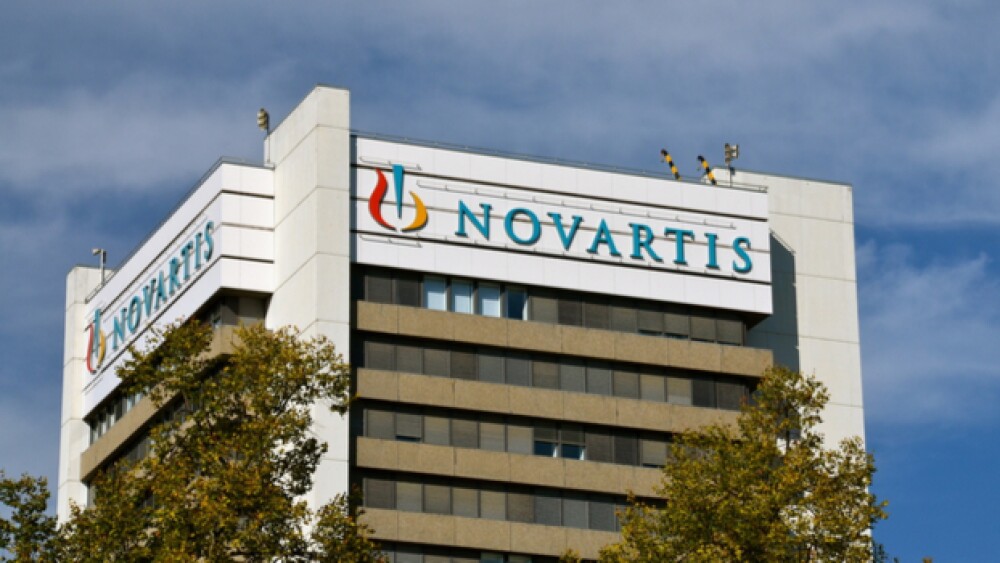The price of the one-and-done gene therapy treatment is about half of what was initially projected by Novartis.
lucarista / Shutterstock
Originally published on May 24, 2019.
On Friday, the U.S. Food and Drug Administration (FDA) approved Zolgensma, the gene therapy that Novartis called a life-changing medicine for children younger than two years old who have been diagnosed with SMA with bi-allelic mutations in the survival motor neuron 1 (SMN1) gene. The therapy will be available to patients for a cost of $2.125 million, or $425,000 per year for 5 years, Novartis said during a conference call following the approval.
Novartis Chief Executive Officer Vas Narasimhan said the company believes Zolgensma will create a “lifetime of possibilities” for children who are eligible for the treatment and the families impacted by the condition. Narasimhan, who has been reshaping Novartis’ assets to including cutting-edge gene therapies like Zolgensma, said the approval is a “testament to the transformational impact gene therapies can have in reimagining the treatment of life-threatening genetic diseases like spinal muscular atrophy.”
SMA is a rare, genetic neuromuscular disease caused by a defective or missing SMN1 gene. Infants with SMA lose the motor neurons responsible for muscle functions such as breathing, swallowing, speaking and walking. The disease can lead to death.
Zolgensma is the first and only gene therapy approved by the FDA for the treatment of SMA, including those who are pre-symptomatic at diagnosis. The gene therapy was approved on the basis of ongoing data from the Phase III STRIVE trial that evaluated the efficacy and safety of a one-time IV infusion of Zolgensma in patients with SMA Type 1 who showed symptoms of SMA at less than six months of age. Data showed Zolgensma provided unprecedented rates of survival, Novartis said. Patients saw rapid improvement in motor function and durable milestone achievement, including an ability to sit up without support. Four-year data from the separate START clinical trial showed the long-term impact on the children treated. Following their treatments, many were able to sit, roll, crawl, play and some could walk, Novartis said.
Zolgensma will be marketed by Illinois-based AveXis, a Novartis company. AveXis was acquired by Novartis last year for $8.7 billion. Dave Lennon, president of AveXis, said the company is partnering with commercial and government payers to quickly provide access to Zolgensma for patients. Because of the multi-million cost, Lennon said they are offering a “pay-over-time model” for the one-and-done treatment. CuraScript SD has been selected as the sole specialty distributor given its rare disease experience, including gene and cell therapies, Novartis said.
At one time, it was anticipated that Zolgensma could have a cost of double the $2.125 million amount announced today. Current 10-year costs of SMA treatment are in excess of $4 million, Novartis said. Biogen’s Spinraza was approved in December 2016 and has a price of $750,000 for the first year of treatment and then $375,000 per year afterward for the remainder of their lives. The Swiss pharma giant added that the announced pricing for Zolgensma is well below the ICER (Institute for Clinical and Economic Review) ultra-rare disease cost-effectiveness threshold.
In a statement issued following FDA approval of Zolgensma, ICER’s president Steven D. Pearson called it a positive outcome that Novartis priced its gene therapy where it did. Pearson said the announced price falls within the upper bound of ICER’s value-based price benchmark range
“Insurers were going to cover Zolgensma no matter the price, and Novartis has spoken publicly about considering prices that approached $5 million. It is a positive outcome for patients and the entire health system that Novartis instead chose to price Zolgensma at a level that more fairly aligns with the benefits for these children and their families,” Pearson said.
Outside of the US, Zolgensma has PRIME (PRIority MEdicines) designation in Europe and is being reviewed under Accelerated Assessment Procedure, and also has accelerated Sakigake designation in Japan.
Vinie Varkey, senior pharma analyst at GlobalData, said in the short-term, Spinraza currently has an advantage over the Novartis treatment. Spinraza is established with safety and efficacy data, compared to the lack of significant long-term data, she said. Although Zolgensma is a one-off treatment, Varkey expects doctors and the families of SMA patients to be slow to switch.
“However, the advent of new-born screening initiatives for SMA is expected to hand Novartis a big advantage in the long-term, as this will help identify pre-symptomatic patients who are likely to prefer a one-off gene therapy treatment compared to Biogen’s chronic treatment option,” Varkey said.
“For Novartis itself, Zolgensma’s approval will be one that is instrumental in catapulting the company as a pioneer in innovative medicine, a theme that is closely embraced by the company and one that will continue to delight its shareholders. With impressive results from clinical trials for SMA, it will not be a surprise if the gene therapy platform from Novartis is leveraged further for applications in other indications, providing them with further growth opportunities.”





